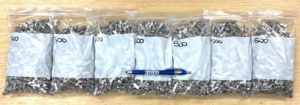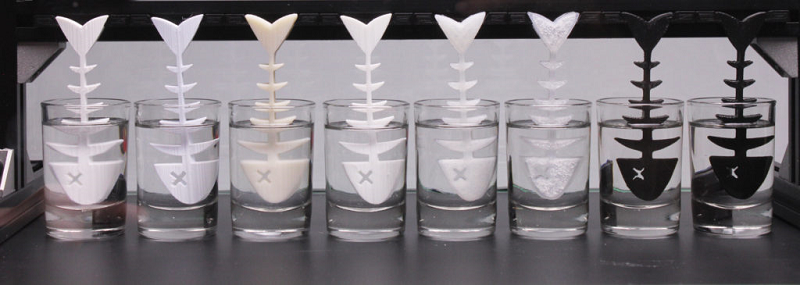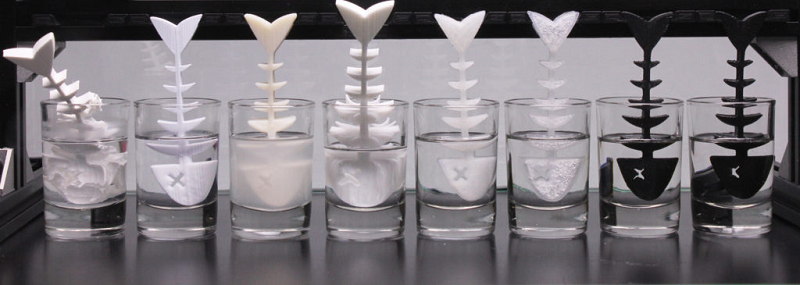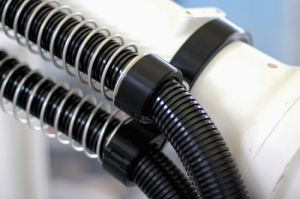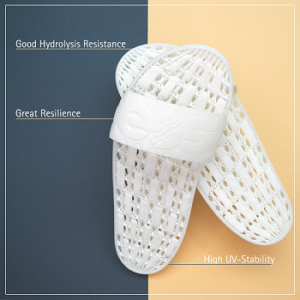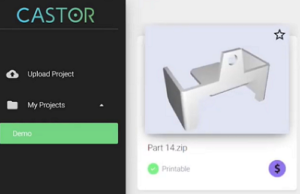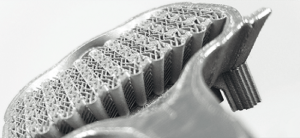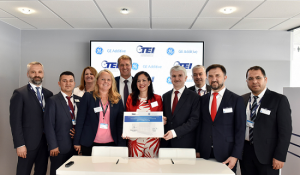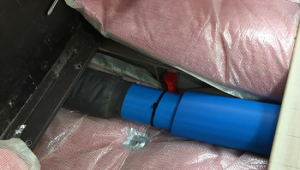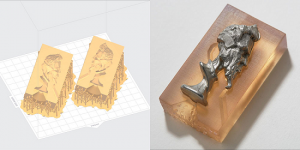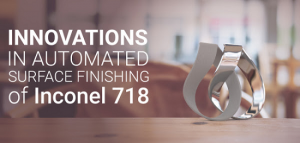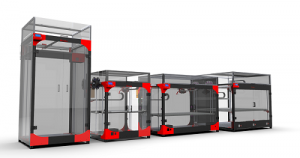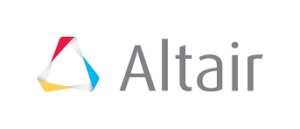Our 3D Printing News Briefs this week are indeed brief, but no less important. We’ll tell you how 3DEO has reached an important production milestone, and also about the newest member of the 3MF Consortium.
3DEO Reaches 150,000 Production Parts Shipped
Metal 3D printing company 3DEO, founded in 2016 for the purpose of competing against conventional manufacturing with high-volume metal additive manufacturing, recently announced that it has reached a major milestone: it’s shipped out 150,000 production parts for end-use applications. The California company’s mission is to make metal 3D printing available for mass production through its digital industrial platform, and this announcement is excellent evidence that it’s well on its way. 3DEO has an interesting business model – instead of selling its 3D printers, the company has focused on becoming an expert user of its own patented technology, and built an automated end-to-end industrial platform, to which its customers then have access.
“150 thousand parts is a terrific milestone for 3DEO. It validates our patented technology, our unique business model, and our mission to break metal additive manufacturing (AM) into high-volume production. Today, we routinely win bids against traditional manufacturing because of our competitive cost structure and material performance,” said 3DEO’s President Matt Sand.
“150,000 parts shipped is only the beginning for us. We are scratching the surface of what’s possible with metal AM in the $130 billion U.S. metal parts market. With our additive and automation software and hardware, combined with our world-class R&D team and quality systems, we are primed to scale metal AM into millions of parts next year.”
3MF Consortium Announces New Specification and Member
 Five years ago, Microsoft launched the new .3MF file format for 3D printing, along with the collaborative 3MF Consortium. It works to define the 3D Manufacturing Format that facilitates easier operation, making it possible to send 3D models sent to other applications, services, and platforms. Members of the consortium include Ultimaker, GE Global Research, ASTM International, Autodesk, and now Viaccess-Orca (VO), a global provider of advanced data solutions and digital content protection. VO, which will be a Founding Member, helped the consortium define its new 3MF Secure Content Specification, which will address production control requirements and payload protection and is available through GitHub under a permissive BSD license.
Five years ago, Microsoft launched the new .3MF file format for 3D printing, along with the collaborative 3MF Consortium. It works to define the 3D Manufacturing Format that facilitates easier operation, making it possible to send 3D models sent to other applications, services, and platforms. Members of the consortium include Ultimaker, GE Global Research, ASTM International, Autodesk, and now Viaccess-Orca (VO), a global provider of advanced data solutions and digital content protection. VO, which will be a Founding Member, helped the consortium define its new 3MF Secure Content Specification, which will address production control requirements and payload protection and is available through GitHub under a permissive BSD license.
“In a modern cloud-connected world, data security and end-to-end encryption are playing an increasingly important role to mitigate the risk of leakages and data corruption in globally distributed manufacturing environments. Protecting the integrity and confidentiality of product designs, patient-specific biometric data, and other sensitive manufacturing content is critical to enabling additive manufacturing to scale into final part production in distributed, contractual, and highly regulated manufacturing environments,” stated Scott White, Software Distinguished Technologist at HP Inc. “We are thrilled that Viaccess-Orca joined the consortium and contributed their decades-long expertise to the design of the 3MF Secure Content extension. The final specification defines the payload encryption based on industry standards, and allows third parties to build their own key management ecosystems upon it. We believe this will allow it to be used to address a broad range of critical use cases simply and seamlessly.”
As a consortium member, VO will help address digital asset security aspects in the digital manufacturing industry. The company also announced the general release of its Secure Manufacturing Platform (SMP), which makes sure that digital assets are traceable and secure, in compliance with the new 3MF specification, across digitally distributed supply chains.
Discuss these stories and other 3D printing topics at 3DPrintBoard.com or share your thoughts in the Facebook comments below.
The post 3D Printing News Briefs, June 20, 2020: 3DEO and 3MF Consortium appeared first on 3DPrint.com | The Voice of 3D Printing / Additive Manufacturing.

